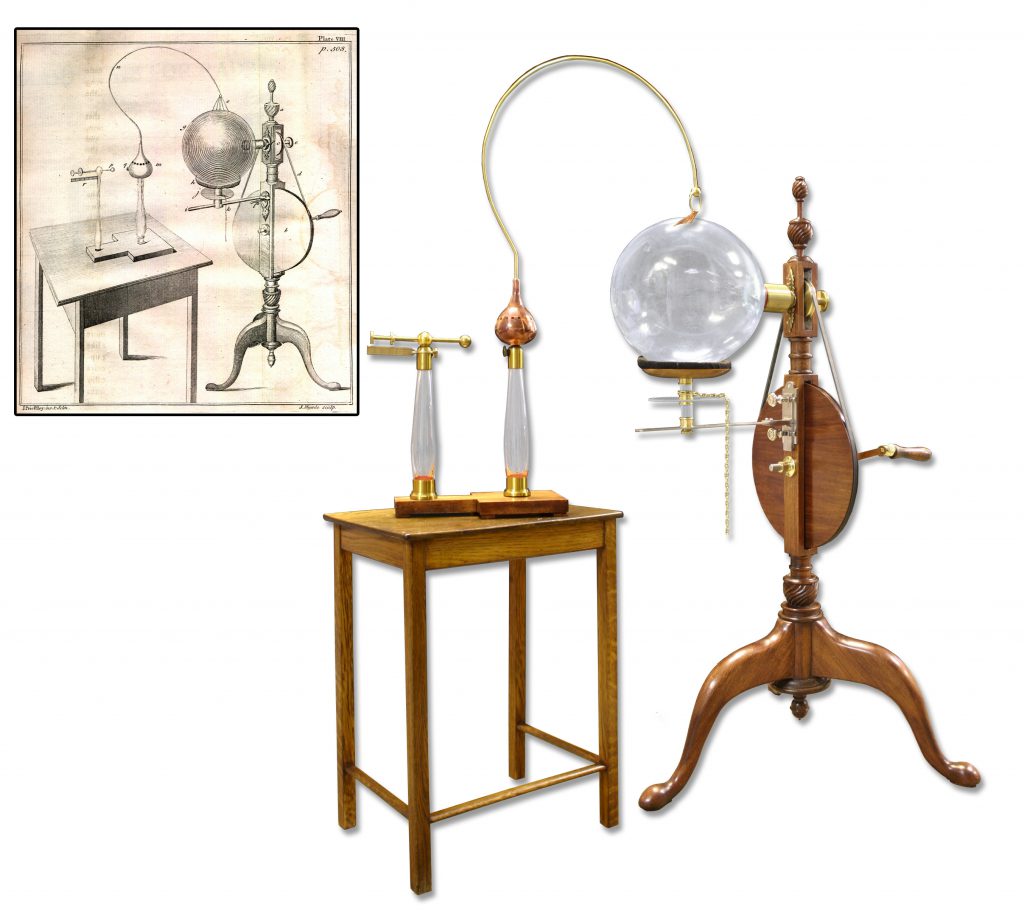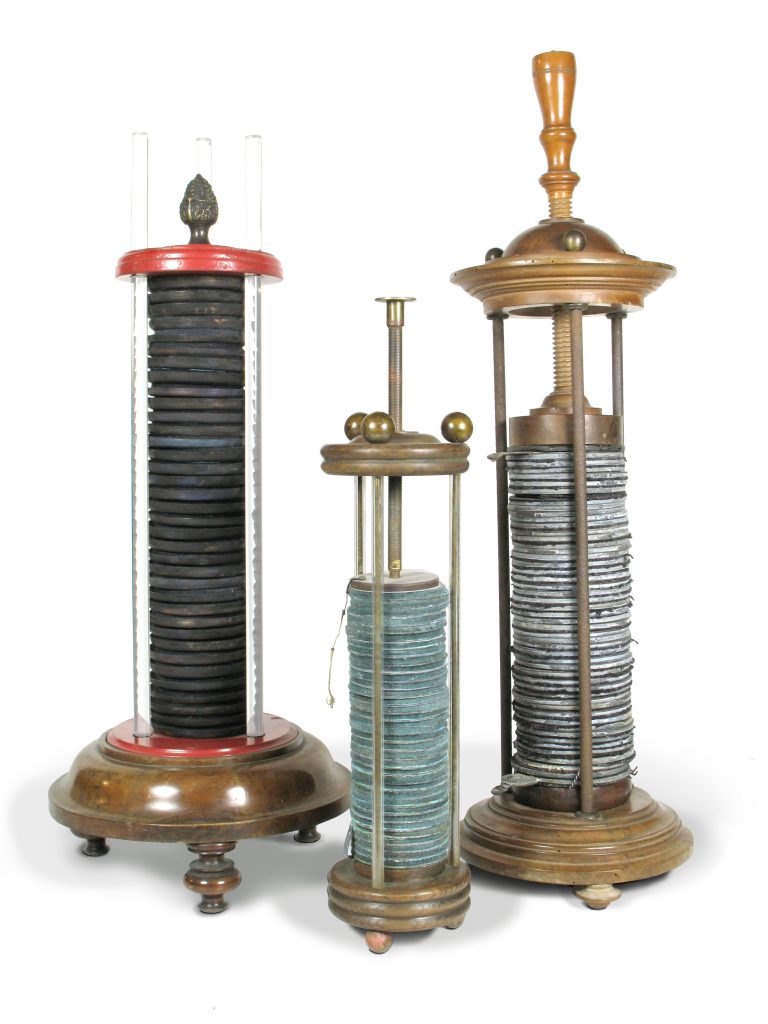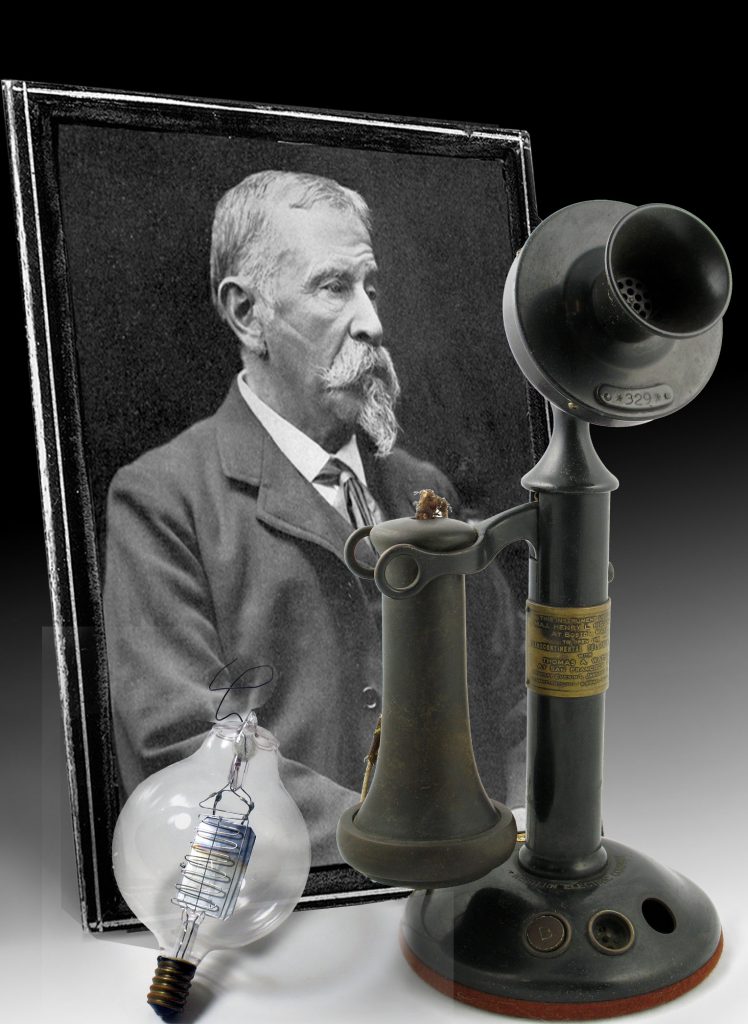Permanent Exhibits
Following a continuous thread of invention and discovery, the SPARK Museum’s collection contains a wealth of unique and rare artifacts dating from the earliest days of scientific electrical experiments in the 1600s through the 1940s and the Golden Age of Radio. Artifacts from the laboratories of the early pioneers of electricity, from magnets and Leyden jars to light bulbs, telegraphs and telephones, all are well-represented at our history museum in Bellingham.
Highlights of the collection include some of the rarest Electrical Artifacts on display anywhere, including one of two original Edison Lightbulbs, and the phone used in the first transcontinental phone call.
Other treasures include rare and original books, treatises and scientific papers by such authors as Gilbert, Newton, Galileo, Benjamin Franklin, Volta, Hertz and Marconi. These texts illustrate the crucial steps and turning points in the development of electricity and radio, and they are housed right here in Northwest Washington!
Learn more about the history of our Collection.
New in 2025!
In addition to our permanent exhibits, our newest gallery is set to open Spring of 2025. This gallery will be home to rotating exhibits on a variety of themes and topics from the Museum’s collection.
Collection Highlights

While he is most well known for his discovery of oxygen, Joseph Priestley wrote the first comprehensive history of electricity, published in 1769. The book includes a detailed description of several static electricity machines. He was so taken with one of the designs that he decided to manufacture and sell it.
Since no complete examples of this machine survive today, SPARK Museum’s Co-Founder, John Jenkins decided to construct a faithful reproduction of the machine, using the illustration and description in his book as a guide.

In 1800 Volta developed the voltaic pile, a forerunner of the electric battery. The first pile consisted of a number of discs of zinc and silver separated by pieces of wet paper and arranged in a vertical column. This was the first device to produce a steady stream of electricity and could operate for decades. In honor of his work in the field of electricity, Napoleon made him a count in 1801. The electrical unit known as the volt was named in his honor.

The electric light was not invented by Thomas Edison. In fact in the years preceding Edison’s invention, electric light was somewhat common in the form of electric arc lamps that were in use in factories, or to light up the town square. These lamps were not, however effective for indoor home or office use, a problem Edison set out to solve.
On December 21, 1879, Thomas Edison announced that he had achieved his goal. He produced several of the new “incandescent” lamps, and invited the public to visit his Menlo Park laboratory on New Year’s Eve to see them. 60 bulbs were originally produced and only two are known to exist today. SPARK Museum is home to one of them.

AT&T staged several calling ceremonies in 1915. The first call was initiated by Thomas Watson, Alexander Graham Bell’s former assistant, at the opening of the Pan-Pacific Exposition in San Francisco. Alexander Graham Bell, inventor of the telephone and co-founder of AT&T, led a group of dignitaries in New York. AT&T President Theodore Vail spoke from Jekyll Island, Ga. And U.S. President Woodrow Wilson spoke from the White House.
This is one of four telephones used to inaugurate the transcontinental telephone line on January 25, 1915.
The plaque on the telephone reads: “This instrument used by Maj. Henry L. Higginson at Boston, Mass. To open the Transcontinental telephone line with Thomas A. Watson at San Francisco, Cal. Monday evening January 25, 1915. Transmitter cutout & signal buttons added”
